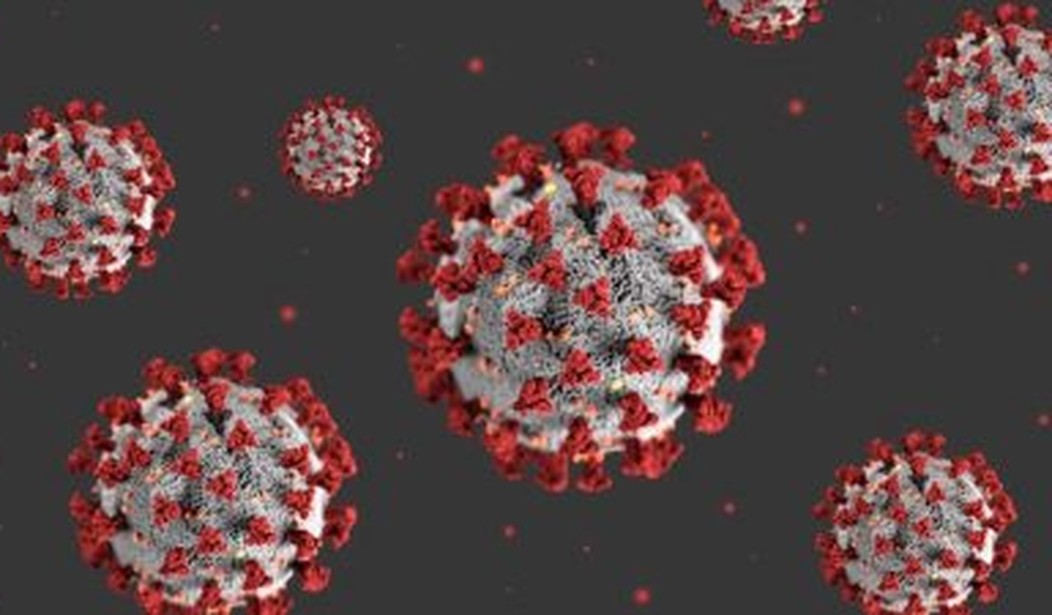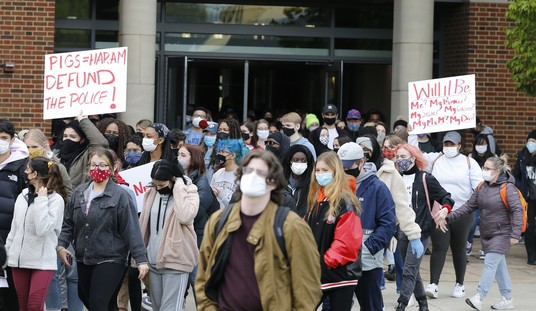For the last year or so, virologist and infectious diseases expert Dr. Steven Quay has been at the forefront of questioning the narrative of COVID-19’s origin, conducting studies, and analyzing the genetic properties that make up the viral strain that has sent the world into panic for the last 18 months. In Sunday’s Wall Street Journal Quay and UC Berkeley physics professor Richard Muller make an extremely strong, scientifically-based case that SARS-CoV-2, the virus responsible for the COVID-19 infection, is a lab-created viral strain.
For weeks here at RedState we have been talking about the genetic manipulation of viral pathogens to make them more transmissible, more pathogenic, and able to jump species, which is commonly known as gain-of-function research (GoF). We’ve also written about how this research may have been responsible for the creation of SARS-CoV-2. Quay and Muller agree. Their article, “The Science Suggests a Wuhan Lab Leak” succinctly lays out the scientific evidence tending to show that gain-of-function research was used to create SARS-CoV-2.
The authors begin by explaining how GoF can be used to make a coronavirus “enormously” more deadly:
“In gain-of-function research a microbiologist can increase the lethality of a coronavirus enormously by splicing a special sequence into its genome at a prime location. Doing this leaves no trace of manipulation. But it alters the virus spike protein, rendering it easier for the virus to inject genetic material into the victim cell. Since 1992 there have been at least 11 separate experiments adding a special sequence to the same location.”
As numerous RedState articles have documented, the Wuhan Institute of Virology is one location at which those experiments took place. Additionally, the WIV was conducting experiments – funded by the NIH and in conjunction with EcoHealth Alliance’s Peter Daszak – from 2015 until at least 2019 on a bat coronavirus collected from a cave in Yunnan Province in 2013 (RaTG13) after it sickened six miners, killing three. (It should also be noted that this was during a time in which there was a moratorium on GoF research.) That virus shares 96.4% of its genomic code and over 28,000 nucleotides with SARS-CoV-2.
So, how could scientists have manipulated that virus – or any of the others on which experiments were being conducted at Wuhan – to make it more lethal and transmissible in humans and produce what we now know as COVID-19 or SARS-CoV-2? It’s all in the genome.
The genome is the “blueprint” from which the cell makes proteins. Each sequence in the genome is like a word communicating which type of protein to produce. There are 64 sequences for 20 amino acids; there are six different sequences for the amino acid arginine, which is used to “supercharge” viruses, and just as different people prefer different words to describe things, “every cell has a different preference for which word it likes to use most.”
To create a double arginine sequence there are 35 different two-word combinations that could be spliced into the site, but scientists have had the most success with one particular combination – one which is suppressed naturally – the CGG-CGG, or “double CGG” sequence. And, the authors explain:
An additional advantage of the double CGG sequence compared with the other 35 possible choices: It creates a useful beacon that permits the scientists to track the insertion in the laboratory.
So, this combination is suppressed naturally, but does that mean it can’t happen naturally? Yes, that’s exactly what it means, the authors argue:
If the insertion takes place naturally, say through recombination, then one of those 35 other sequences is far more likely to appear; CGG is rarely used in the class of coronaviruses that can recombine with CoV-2.
“In fact, in the entire class of coronaviruses that includes CoV-2, the CGG-CGG combination has never been found naturally. That means the common method of viruses picking up new skills, called recombination, cannot operate here. A virus simply cannot pick up a sequence from another virus if that sequence isn’t present in any other virus.“
How does that relate to CoV-2? Hold on to your seats.
Now the damning fact. It was this exact sequence that appears in CoV-2. Proponents of zoonotic origin must explain why the novel coronavirus, when it mutated or recombined, happened to pick its least favorite combination, the double CGG. Why did it replicate the choice the lab’s gain-of-function researchers would have made?
So here we have a genetic manipulation that has only previously occurred in a lab previously – one of which being the Wuhan Institute of Virology – during a period of time that coincides with the outbreak of SARS-CoV-2, on a virus nearly identical to SARS-CoV-2, which isn’t found anywhere in other naturally occurring coronaviruses. Fishy? You bet. Surprising? Not in the slightest.
But wait, there’s more.
In prior outbreaks of coronaviruses with a known zoonotic transfer origin, such as the original SARS or Middle East Respiratory Syndrome (MERS), the viruses “evolved quickly as they spread through the human population, until the most contagious forms dominated.” As one would expect.
That’s not what happened with the Wuhan flu:
“[COVID-19] appeared in humans already adapted into an extremely contagious version. No serious viral ‘improvement’ took place until a minor variation occurred many months later in England.”
But it still could have happened naturally, right? Survey says no, and here’s that gain-of-function word again:
“Such early optimization is unprecedented, and it suggests a long period of adaptation that predated its public spread. Science knows of only one way that could be achieved: simulated natural evolution, growing the virus on human cells until the optimum is achieved. That is precisely what is done in gain-of-function research.”
Unsurprisingly, the Chinese tried to hide this beacon.
The initial genomic sequencing – you know, the one that was supposed to help our public health officials and scientists understand this virus and how to fight it – provided by Dr. Shi Zhengli of the Wuhan Institute of Virology just happened to skip this fact about the SARS-CoV-2 virus:
“When the lab’s Shi Zhengli and colleagues published a paper in February 2020 with the virus’s partial genome, they omitted any mention of the special sequence that supercharges the virus or the rare double CGG section. Yet the fingerprint is easily identified in the data that accompanied the paper. Was it omitted in the hope that nobody would notice this evidence of the gain-of-function origin?”
Yes, that’s exactly why it was omitted. Since the data accompanying the paper made it easy for scientists to identify the fingerprint, why didn’t anyone do so? It stands to reason that if this sequence was the one universally used for double arginine in lab-manipulated viruses, all of those “experts” who signed on to letters in Lancet and Nature would have known *exactly* where to look to see if there was evidence that this virus didn’t originate in nature.
They didn’t look – they did the exact opposite, in fact, apparently “encouraged” by Dr. Fauci and Peter Daszak – but other scientists did. Those scientists found the sequence and published their findings, which were ignored by US scientists and the media.
“But in a matter of weeks virologists Bruno Coutard and colleagues published their discovery of the sequence in CoV-2 and its novel supercharged site. Double CGG is there; you only have to look. They comment in their paper that the protein that held it “may provide a gain-of-function” capability to the virus, “for efficient spreading” to humans.”
It looks like the walls are closing in on the Wuhan Lab of Virology and their ardent defenders like Peter Daszak and Jonna Mazet. One cannot claim that the virus naturally mutated when the mutation which occurred has never been previously found in nature. While there is certainly a first time for everything, the suggestion that there’s no way that this virus could have come from a lab that just happened to be conducting the experiments that could have created this virus is an insult to our intelligence.
As Quay and Muller conclude:
“The presence of the double CGG sequence is strong evidence of gene splicing, and the absence of diversity in the public outbreak suggests gain-of-function acceleration. The scientific evidence points to the conclusion that the virus was developed in a laboratory.”
Usually, where there’s smoke, there’s fire. In this case, every place we look, there’s smoke. I think we are all even starting to see some flame as well.













Join the conversation as a VIP Member